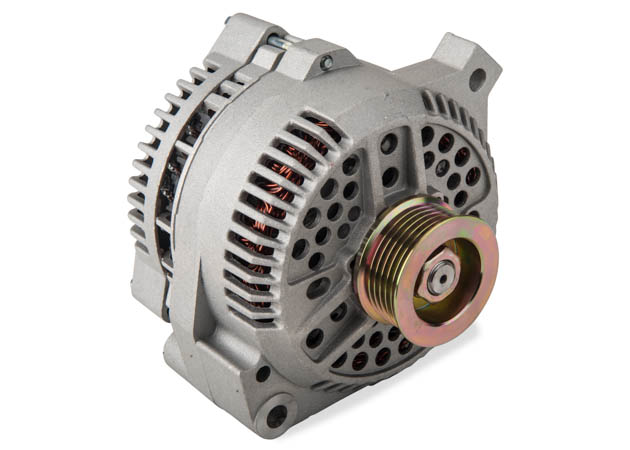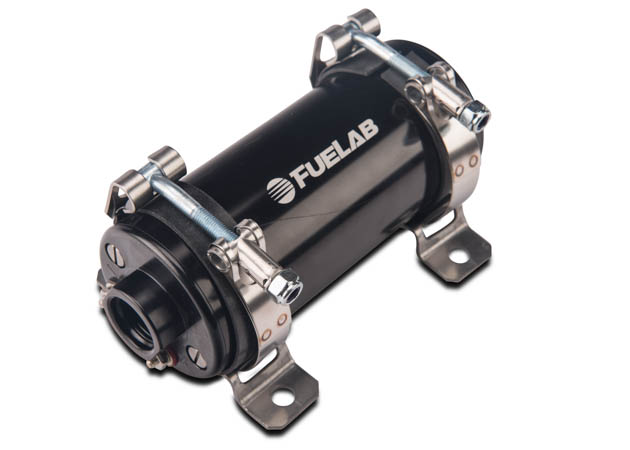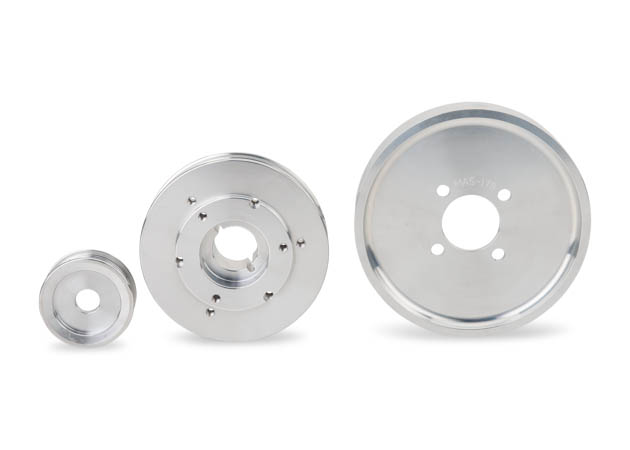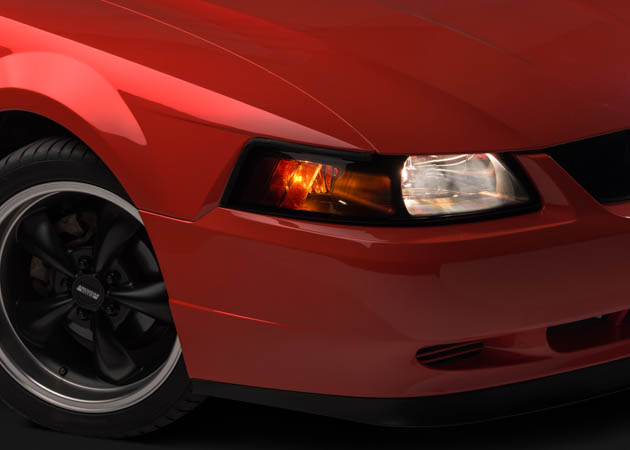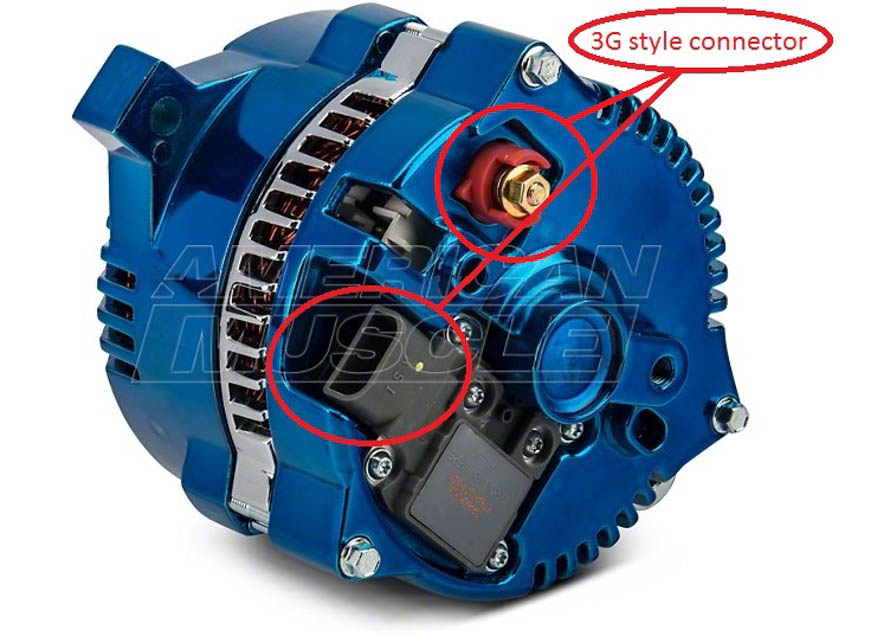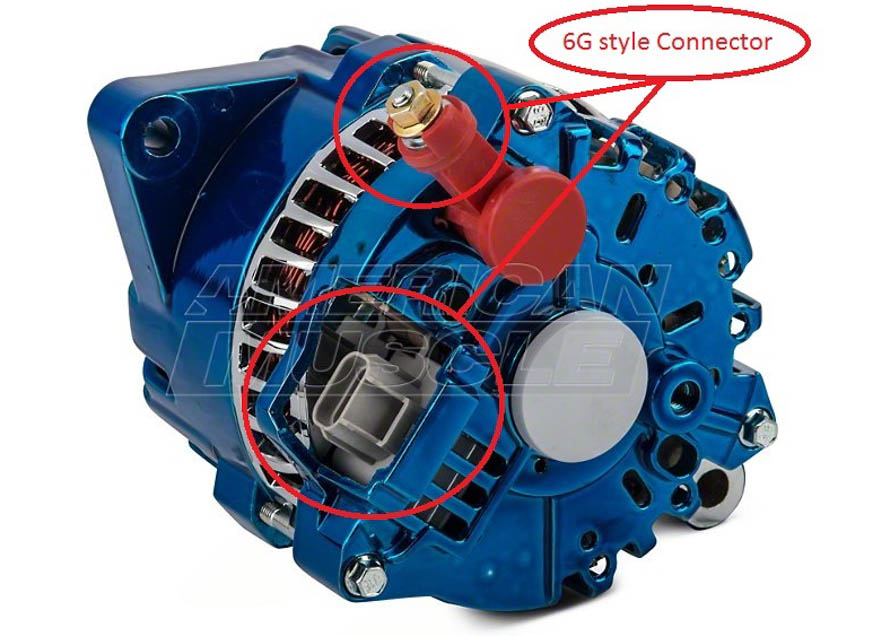Alternator Ratings
Alternators are rated based on the amount of power that they put out, measured in amps. More powerful alternators are able to put out more power while the engine is running, meaning they can power more electricity-hungry accessories. Stock alternators are usually rated around 100 to 150 amps, and will work great for a lightly modified car. If there is too much draw on the system and the alternator can’t keep up, you may notice reduced performance from your Mustang until the load on the system drops. Almost every sensor on your Mustang requires a voltage reference from the PCM, so lower voltage than necessary can cause incorrect readings or operation. It is very important to have an alternator that can keep up! When you start increasing the electrical draw on your Mustang, you should consider upgrading your alternator.
When Should I Upgrade My Alternator?
When adding large sound systems, a lot of gauges, a more powerful ignition system or larger fuel, it may be difficult for your stock alternator to keep up with the increased demand. By upgrading to a stronger alternator, you will be able to support the increased electrical load. While a couple of aftermarket electrical accessories will not be too much for your stock alternator, you may need to consider a larger alternator if you are running underdrive pulleys. Underdrive pulleys will hinder your alternators ability to keep up, so it will be more sensitive to higher electrical load. If your car is supercharged, it may also be a good idea to upgrade to a more powerful alternator in order to handle the increased load of the intercooler pump, upgraded fuel pump, and heat exchanger fans.
How Can I Tell If I Need a Stronger Alternator?
If you notice that your interior or exterior lights are dimming significantly when your sound system is turned up or other accessories are switched on, it may be time to either replace a failing stock alternator, or upgrade your stock alternator. When you have to replace a failing alternator, you should consider putting a stronger one in if you are planning on adding more power hungry parts, or already have installed items which pull more electrical current. When it comes time to upgrade, the bigger the alternator the better! You will want to make sure that you have a surplus of electrical energy available for your car, so choosing a higher output alternator is always a good idea. If you have a mild set up, the largest available alternator is not required and you can go with one of the lower output upgrades if it better fits your budget. It would also be wise to choose a wiring upgrade for your car if one is available, so that you can recharge your battery quicker and supply the larger current more effectively to your system.
What Goes Wrong With Alternators and How To Test Them
What Goes Wrong With Alternators and How To Test Them
What's the Difference Between 3G & 6G Alternators?
Ford has used two different style alternators throughout the years. The difference is in the connectors. Check out the visual comparison below.
3G style connector Mustangs:
- 1987-1995 5.0 V8s
- 1996-1998 4.6 V8s
- 1994-2000 3.8 V6s
6G style connector Mustangs:
- 1999-2008 4.6 V8s
- 2001-2004 3.9 V6s
- 2005-2008 4.0 V6s
Fitment includes: 1979, 1980, 1981, 1982, 1983, 1984, 1985, 1986, 1987, 1988, 1989, 1990, 1991, 1992, 1993, 1994, 1995, 1996, 1997, 1998, 1999, 2000, 2001, 2002, 2003, 2004, 2005, 2006, 2007, 2008, 2009, 2010, 2011, 2012, 2013, 2014, 2015, 2016, 2017, 2018, 2019, GT, V6, Cobra, ShelbyGT500, Mach1, Bullitt, Boss, LX, SVO, EcoBoost, ShelbyGT350


